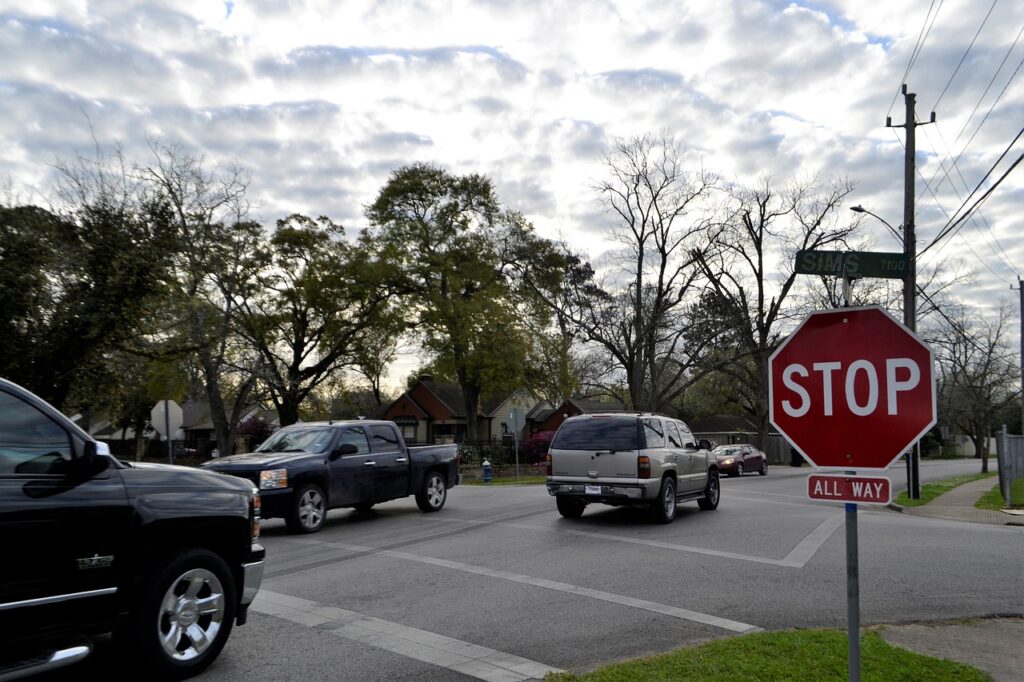How to Yield the Right of Way – Avoid Right-of-Way Accidents
Unless you have recently taken a Driver’s Education course, then be honest, there are times when you are at a stop sign or yield sign and really don’t know whose turn it is to proceed! It happens to all of us. You have four drivers all sitting there staring at each other, wondering who will be the first to go. You are afraid to go because you don’t want to get T-boned by another driver who chooses to go at the same moment you do. As specialists in personal injury cases, Nance Cacciatore handles many car accident cases. In order to keep you safer when out on the road, we wanted to look deeper at the question, whose turn is it anyway?
FOUR-WAY STOPS
Four-way stops are those magical places where four directions of traffic meet, each with a stop sign. Four drivers sit there trying to read the faces of the other drivers to figure out whose turn it is and who is going to be the brave one that attempts to go through the intersection first. But, there are rules for this that will help keep everyone safe if they follow them. According to Florida law, “At a four-way stop intersection, the driver of the first vehicle to stop at the intersection shall be the first to proceed. If two or more vehicles reach the four-way stop intersection at the same time, the driver of the vehicle on the left shall yield to the driver of the vehicle on the right.” So, if you aren’t sure if you or the person next to you arrived first, the person to the right should proceed.
YIELD SIGNS
According to the same Florida law cited above, when approaching a yield sign, you are required to slow down. You are not allowed to proceed through a yield sign at regular speed. You are also required to stop if it is necessary for the safety of you, a pedestrian, or another vehicle. You may then proceed slowly to the point that you can view oncoming traffic. You may proceed when it is safe. If you hit another car or a pedestrian and failed to yield, you will be held accountable for not yielding the right-of-way.
ROUNDABOUTS AND TRAFFIC CIRCLES
While roundabouts and traffic circles are not especially common in Florida or the United States, in general, we do have them, so it is important to understand the rules. Traffic circles are usually larger and have higher speed limits than roundabouts. They also may have stop signs or signals. Generally, you should reduce speed as you approach the roundabout or traffic circle. You must yield to any pedestrians and any vehicles that are already in the roundabout or traffic circle. When it is safe, you enter a gap in the flow of traffic, never stopping while in the roundabout or traffic circle, unless of course, the car in front of you stops for some reason.
RIGHT-OF-WAY ACCIDENTS AND NANCE CACCIATORE LAW
If you have been injured in a right-of-way accident in which the other driver did not yield the right-of-way, then you should call Nance Cacciatore. We specialize in personal injury cases. We are located in Melbourne and have been serving the Brevard County area for over 55 years. If you were the victim of such an accident, let Nance Cacciatore fight for you!
